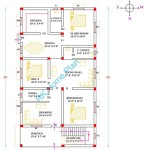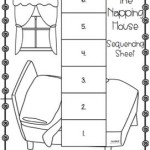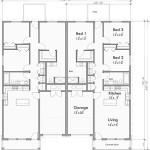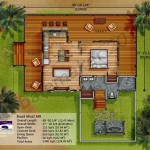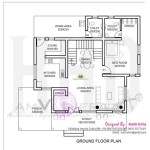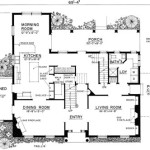Essential Elements of Tiny House Designs and Floor Plans
Tiny house living has gained immense popularity in recent years, captivating individuals seeking alternative housing options that combine sustainability, affordability, and simplicity. Designing a tiny house requires careful planning and meticulous attention to detail. Here are some essential aspects to consider when crafting your dream tiny house:
Space Optimization
One of the key challenges in tiny house design is maximizing space utilization. Every square foot counts, so it's crucial to utilize vertical space, built-in storage solutions, and multi-functional furniture to create a comfortable and functional living environment.
Smart Storage
Incorporating ample storage space is paramount in tiny houses. Hidden compartments under beds, concealed storage in walls, and drawers under stairs can provide ample room for personal belongings without cluttering the limited floor space.
Open Floor Plans
Open floor plans create the illusion of more space and allow for flexibility in furniture arrangements. Dividing walls can be replaced with partial partitions, shelves, or curtains to create distinct zones without sacrificing a sense of openness.
Natural Light
Natural light plays a crucial role in making tiny houses feel airy and spacious. Incorporating large windows, skylights, and French doors allows natural light to flood the interior, reducing the need for artificial lighting and creating a more welcoming ambiance.
Functional Kitchen
The kitchen is a central hub in tiny houses. Consider installing appliances with dual functionality, such as a stovetop oven combination or a refrigerator with an ice maker. Utilize space-saving designs, such as pull-out pantries and sliding shelves, to maximize storage and efficiency.
Comfortable Living Area
The living area should be designed for relaxation and connection. Opt for cozy seating, built-in storage, and a focal point, such as a fireplace or large window, to create a warm and inviting space.
Efficient Bathroom
A functional bathroom is essential in tiny houses. Choose fixtures that optimize space, such as a composting toilet or a shower with a sliding door. Consider installing a skylight to enhance natural light and create a more spacious feel.
Versatility
Tiny house designs should incorporate versatility to accommodate changing needs. Multi-purpose furniture, such as a couch that converts into a guest bed or a dining table that extends for entertaining, allows for flexibility and additional functionality.
Sustainability
Sustainability is a key aspect of tiny house living. Consider incorporating renewable energy sources, such as solar panels or wind turbines, to reduce energy consumption. Use eco-friendly building materials, such as bamboo or recycled steel, to minimize environmental impact.
Future-Proofing
When designing a tiny house, consider future needs and accessibility. Incorporate features such as wider doorways, accessible bathrooms, and adjustable height countertops to ensure the house remains adaptable to changing circumstances.
Crafting a well-designed tiny house requires careful consideration of these essential elements. By optimizing space, incorporating smart storage, embracing open floor plans, utilizing natural light, and prioritizing comfort and functionality, you can create a harmonious and sustainable living space that meets your unique needs and aspirations.

Tiny House Floor Plans With Lower Level Beds Tinyhousedesign

Tiny House Plan Examples

Floor Plan For Tiny House

Tiny House Floor Plans Design Your

Family Tiny House Design Floor Plans Layout

Tiny House Floor Plans 32 Home On Wheels Design

27 Adorable Free Tiny House Floor Plans Craft Mart

Tiny House Floor Plans With Lower Level Beds Tinyhousedesign

10 X 20 Tiny Home Designs Floorplans Costs And Inspiration The Life
:max_bytes(150000):strip_icc()/wanderinstarfarms_103561926_275439266841919_804825427512003420_n-f6f92ef6e3e642acb214c24736ceb114.jpg?strip=all)
11 Beautifully Designed Tiny Homes

